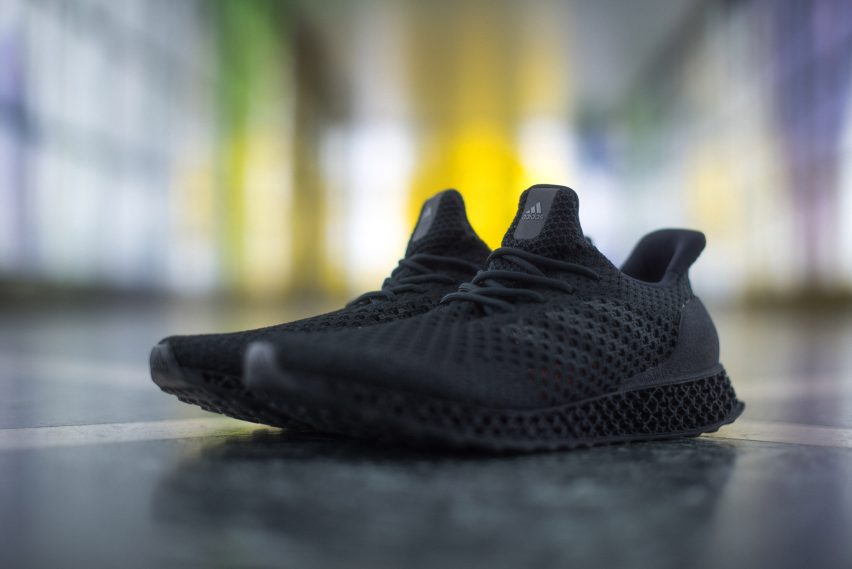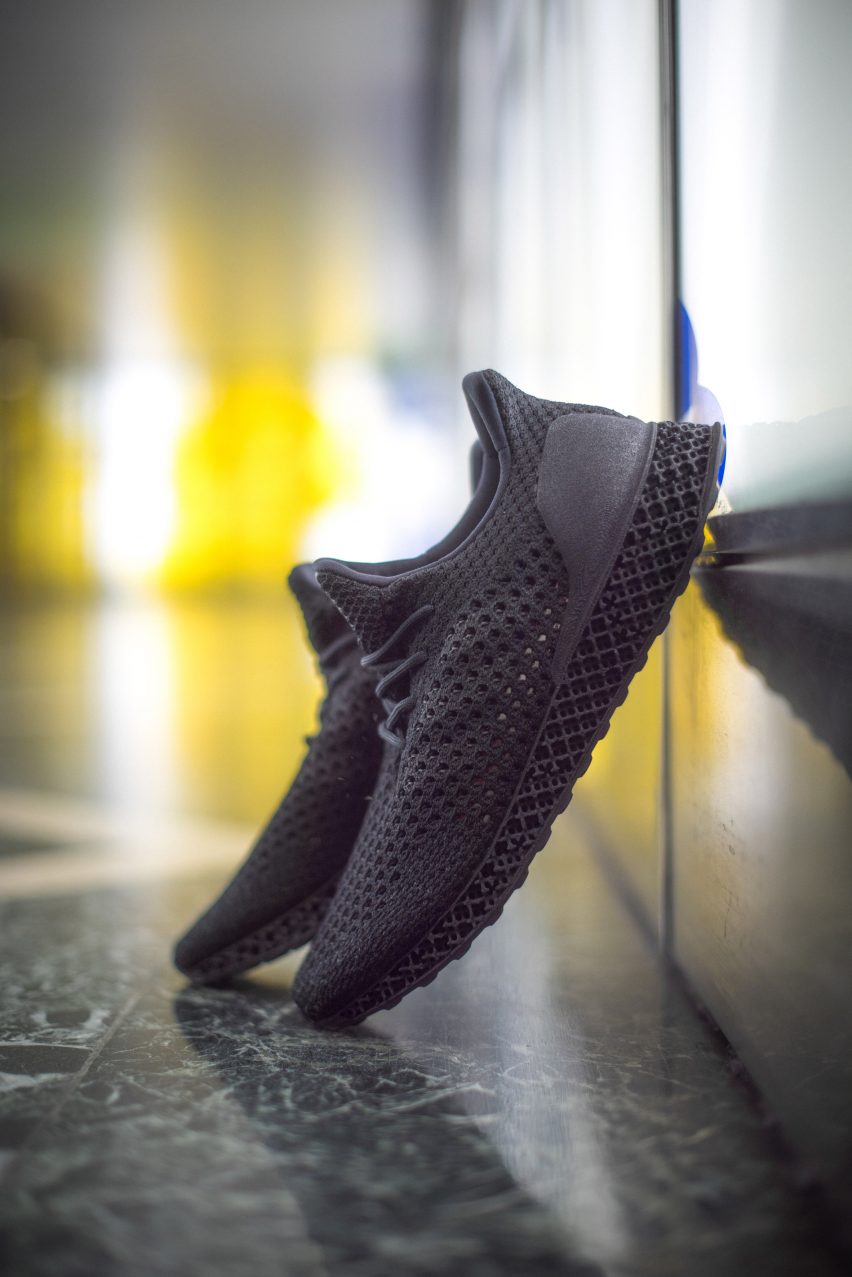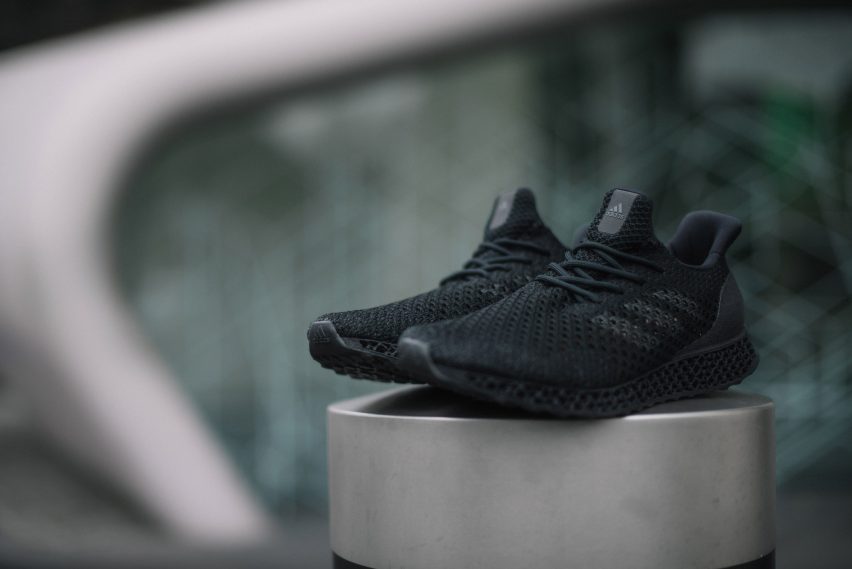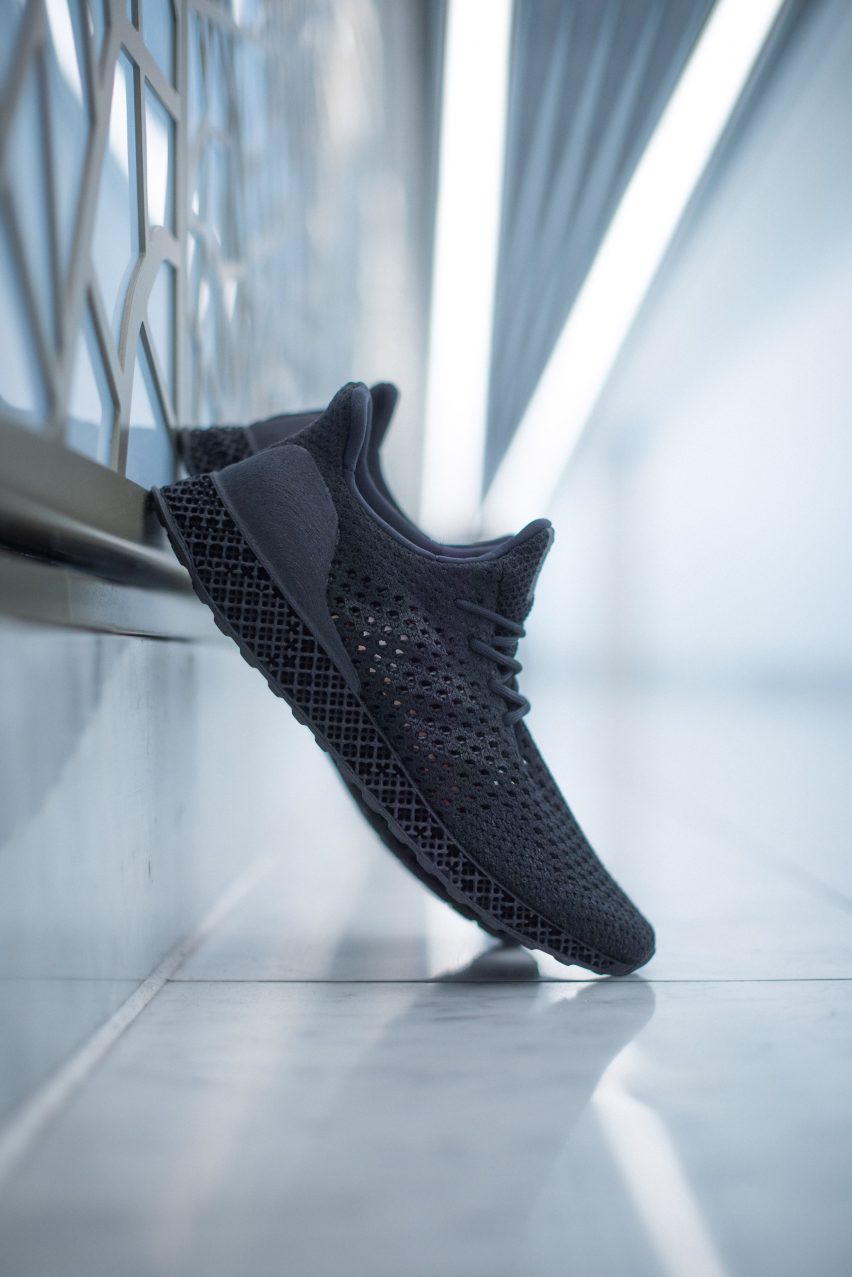
3D-printed Adidas trainers go on sale
Adidas has released a limited-edition run of its 3D-printed trainers, which were worn by a number of athletes at this year's Rio Olympics.
The 3D Runner goes on sale today at stores in London, New York and Tokyo – marking the first time that Adidas shoes incorporating 3D-printing technology have been available to purchase.

The shoe features many similar elements to the Futurecraft trainers unveiled in 2015, which had 3D-printed soles to mimic runners' footprints.
The shoes' midsole is made from a 3D-printed web-like structure, with denser zones in high-force areas and less dense zones in low force areas.

A 3D-printed heel counter, the plastic insert used to reinforce the heel cup of a shoe, is integrated into the midsole – negating the need for glueing or stitching.
The upper of the shoe is made using Adidas' Primeknit technology, meaning that it is both light and flexible.

The 3D Runner was first unveiled by Adidas in August at the Rio Olympics when a number of athletes, including Team GB heptathlete Jessica Ennis-Hill and USA swimmer Allison Schmitt, wore them during the medal ceremonies.

Adidas has become known for pushing the boundaries of sneaker innovation, gaining it a place on the inaugural Dezeen Hot List, ahead of Nike.
This year, it has unveiled the Futurecraft Tailored Fibre trainers, constructed through an industrial sewing technique used to manufacture heated car seats, and a version of the brand's Superstar trainer featuring a seamless upper made from a single piece of leather.
Earlier this month, the brand revealed it would be making one million pairs of its ocean plastic shoes in 2017, with the ultimate ambition being to eliminate virgin plastic from its supply chain.
Speaking to Dezeen last year, Adidas executive board member for global brands Eric Liedtke said that the company aims to use design to challenge its arch-rival Nike as the dominant brand in the American market.
"I need to overcompensate in America from a design point of view," he said. "I need to get this right [in the USA], because we're not having the success we are in Europe right now."